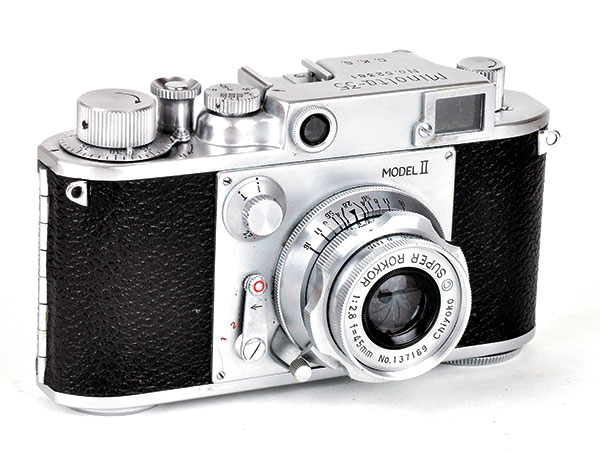
The last version, the Minolta SR-1s - introduced in 1967, has the additional 1/1000s shutter speed. Also the wind-on lever became bulkier, and the strap lugs protrudes from the black part of the body rather than the chrome top.
Minolta camera old series#
The finder eye piece became rectangular, requiring a series V accessory shoe. In 1965 the SR-1 series V with significantly improved body was introduced, recognizable by a new body design without the stepped "shoulders", and a slimmer front-side meter socket. It rests on top of the finder prism housing. In this day and age where 35mm cameras are pretty cheap, I'd probably buy a Nikon if I was going to buy an old 35mm body. On the other hand, in those days, I dreamed of owning Nikon but just couldn't afford it. The center-weighted metering pattern produces good exposures, so as long as you dig AV, the camera will treat you fine. An accessory shoe to be attached to the finder eyepiece was separately available. It's a great camera and the nice thing is that Minolta actually made their own glass for their optics. The camera’s light meter works only in aperture priority, which is really what the XG1 was designed to shoot.


at f2.8, when reading EV8 at the meter scale). For correct exposure, the sum of the numerals set on the shutter-peed dial and the aperture ring must equal the EV-value read on the meter (eg. Corresponding values in yellow is also engraved on the aperture ring on the appropriate Rokkor lens. Lens collaborations with Konica, Minolta, Kyocera, Zeiss, Schneider and Sigma. A light value system is provided on the early Minolta SR cameras, indicated by the yellow "LV"-index next to the shutter-speed dial, on which yellow numerals are engraved on the edge. Leica TL mount lenses can also be mounted on the camera without an adapter. When the film speed and a suitable shutter speed is set, the meter shows directly on its scale the recommended aperture which must be set on the lens aperture ring. A small protruding pin was added to the shutter speed dial ( 2) to mesh with the meter ( 3). The shutter-speed dial had already been modified to rotate without being lifted. In 1961 a rather bulky chrome bracket ( 1) with two holes at the top was added to the right-hand front of the camera for the separately available selenium exposure meter, requiring the model name to be moved to the opposite side on the front. M9 Digital Rangefinder Camera Body Boxed Sensor Replaced JAPANESE ANTIQUE. Well buy all your camera equipment in any condition. The lens is attached to the front lens due to. Several versions of the SR-1 were introduced over the following years. Selling your old cameras, lenses and equipment with us is easy and free. It was obviously introduced as a low budget alternative, with the fastest shutter speed removed, and offered with a slightly slower standard lens, the six-element Auto Rokkor-PF 1:2 f= 55mm. There is actually not much difference between this and the first one, the SR-2. Let’s hope it lasts.The Minolta SR-1 was launched in 1959 as the second 35mm SLR camera from Chiyoda Kogaku. 1986 Minolta 100mm f/2.8 Macro (1:1 reproduction ratio. Film stocks are still going out of production here and there, but it’s easier to shoot film in 2018 than it was five years ago, and that’s a good thing. I went to my local camera stores and purchased the following lenses to experiment with: 1985 Minolta 70-210mm f/4 Price paid: 100. Right now, things are relatively great in the film world, but there’s no telling when the boom will end. You can also send it away to the labs mentioned above, but expect to pay a little more. If you want to shoot black-and-white, pick up some Kodak T-Max, Kodak Tri-X, or Ilford HP5 (The new TMAX P3200 film from Kodak is aimed at more advanced users since it requires careful processing, which costs extra if you’re sending it out.) All of those stocks have been around forever and there are lots of guides ( like ours!) online to help you develop it on your own. Labs like The Find Lab and The Darkroom do an excellent job. No, it’s not cheap, but that’s part of what helps the process feel more precious and fun. Expect to pay roughly $11 to have each roll developed and scanned.

They will set you back less than $4 per roll and give you a semi-grainy, and very film-esque look. If you want to shoot color, start with Agfa Vista (now discontinued), Kodak Gold, or Fuji Superia. This Nikon isn’t the prettiest camera, but it has a very sharp lens, which is crucial.īy now, you’ve noticed that pretty much every one-hour photo place on the planet has disappeared, which means you should plan on sending your film away for development unless you want to do it yourself (which is totally fun and you should definitely try it, but the subject of a different article!).


 0 kommentar(er)
0 kommentar(er)
